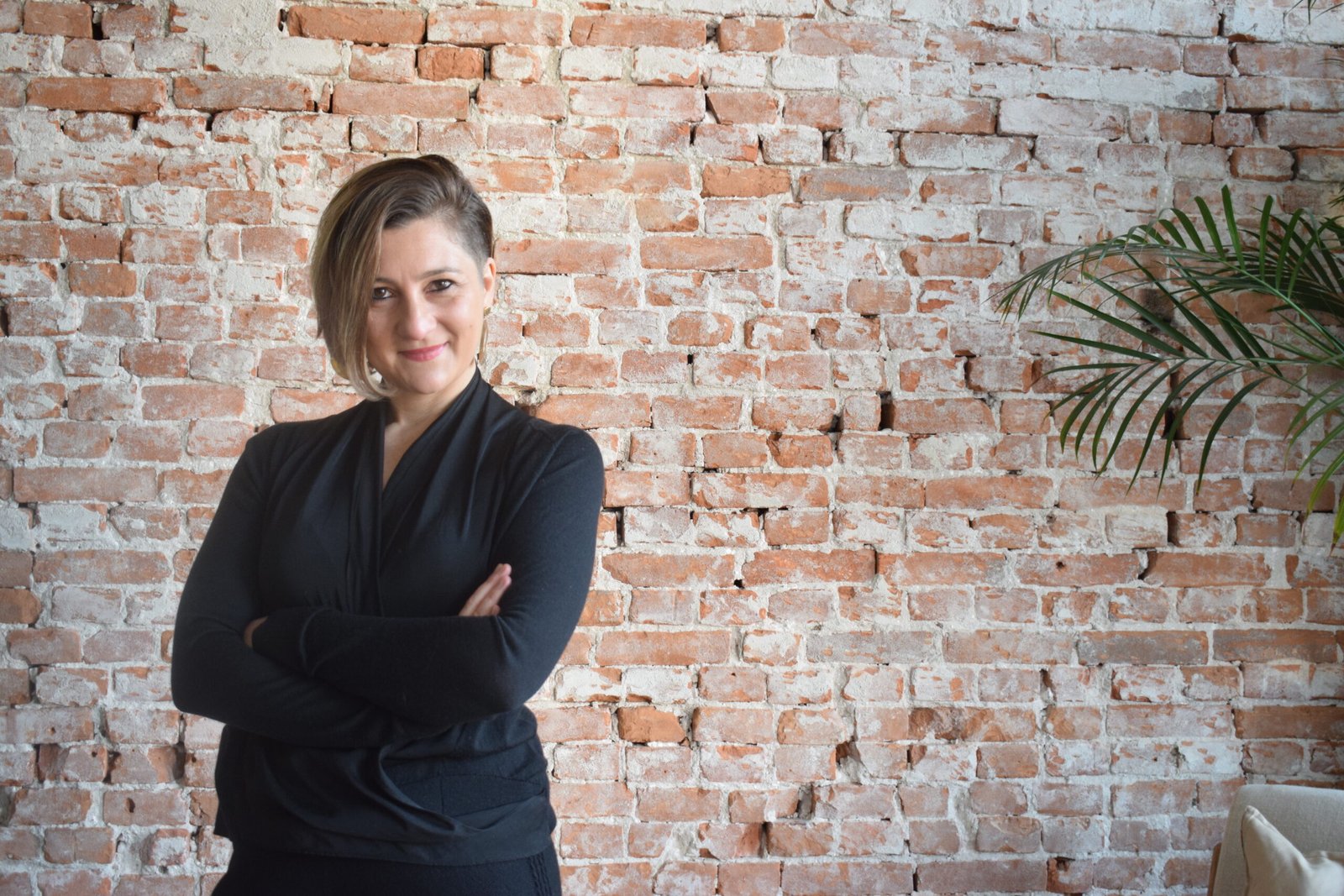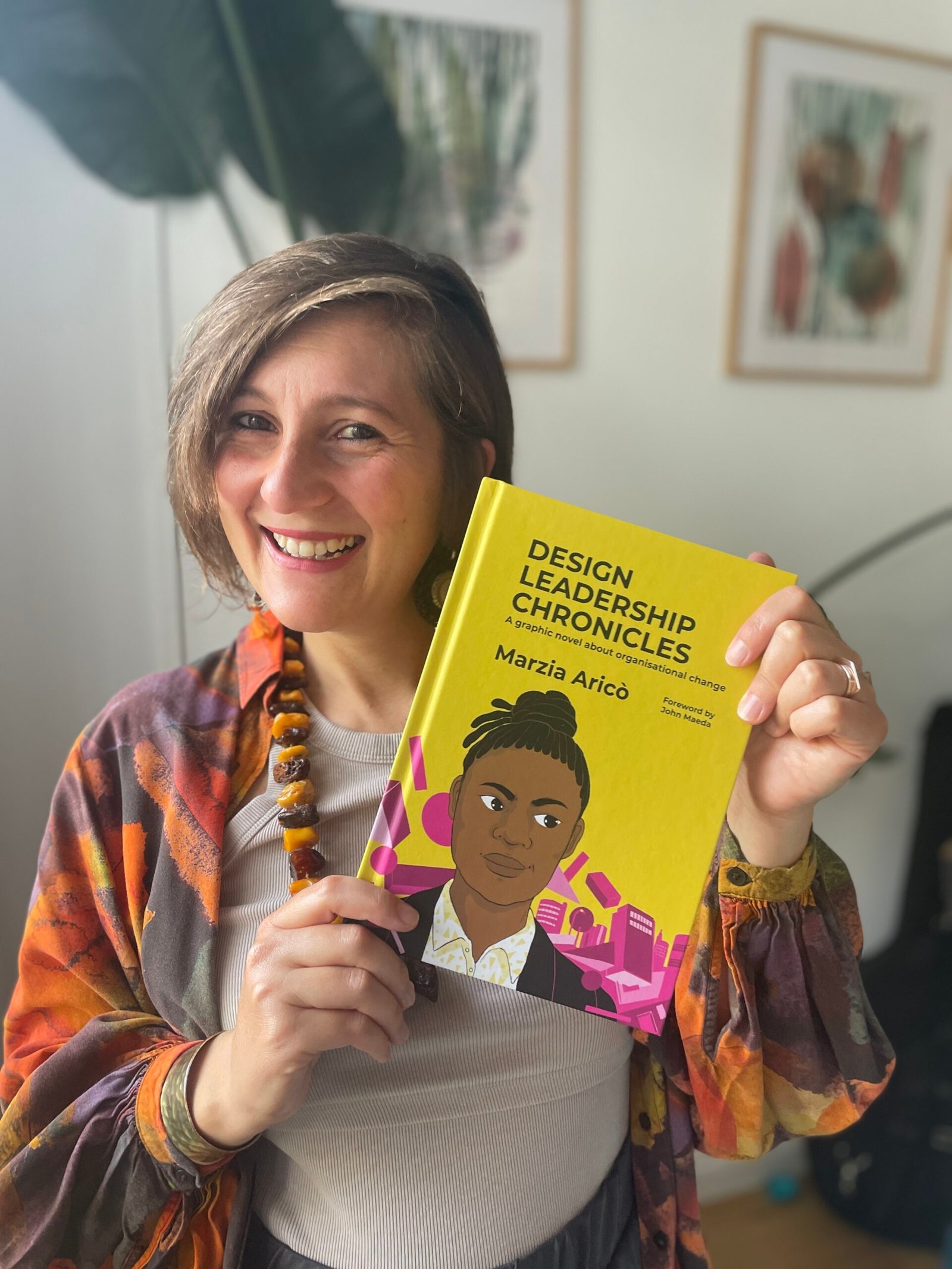Through the lens of design, creativity, and customer insight, Marzia Aricò empowers large organisations to move beyond outdated structures, rethink decision-making, and reorient around what truly creates value.

Tell us about your journey! What led you to this point?
Since the very beginning of my career, I have been fascinated by how large corporations operate. We tend to associate large organisations with machines, to the point that the metaphor has permeated our language: a “well-oiled machine,” people often say. The reality, however, is that an organisation is simply a crowd of people choosing to work together towards a shared goal. Their work is regulated by policies and processes, and enabled by systems. The human side of this story is fundamental, yet often underestimated.
I’m a designer. And I have always believed that design can offer both a way of thinking and a practical approach to solving some of the trickiest challenges organisations face today. I started by designing products, then moved into the design of services, and then into the design of how organisations make decisions. Today, I support organisational transformations and equip leaders to thrive through those transformations. The question I’m usually asked is: How might we use creativity to reorient around what matters most? That is what makes me tick.
What has been your biggest achievement?
Helping very large, legacy organisations see themselves from the outside in, and then act on it. Let me explain.
Organisations today are still largely structured according to a model built in the late 1800s. That model was designed for a world shifting from an agrarian economy to mass production and industrialisation. Its primary need was efficiency and scale in production. The resulting organisational model had three defining characteristics:
- Centralised control and hierarchy: Decisions were made at the top and cascaded down through layers of management, ensuring consistency and control.
- Division of labour: Tasks were broken into simple, repetitive steps, with workers specialising in specific activities, maximising efficiency.
- Standardisation and predictability: Uniform products were produced at high volume, with minimal variation and waste.
This structure was optimised for efficiency, predictability, and control, but at the cost of silos, rigidity, and limited adaptability. And despite today’s needs being radically different, this outdated structure still dominates. The challenges of our time are complex, ambiguous, fluid, systemic, and multistakeholder, making the old model unfit for purpose.
The only actor in this system who truly sees the organisation as a whole, rather than a set of silos, is the customer. Customers interact with the organisation end-to-end, bringing an “outside-in” perspective on the value it creates and how. I have helped dozens of large organisations make this shift in perspective: to see themselves through their customers’ eyes, to prioritise what really matters and creates value, and to deprioritise what doesn’t.
What’s the biggest result you help your clients achieve?
Create a single, integrated view of the products and services customers experience, and of the journeys they take through them. Use this view as a decision-making mechanism to prioritise initiatives and allocate budgets. Anchor measurement in this view to assess whether the organisation is achieving its goals, for customers, the business, and operations (measurement framework). Ultimately, the biggest result is: faster, more informed decision-making that drives meaningful impact. All of this, by design.
What would be your biggest piece of advice for readers who want to achieve the same?
Start from the customer. Most organisations I’ve worked with believe they know their customers. What they actually have is data. What’s missing are insights: into customers’ experiences, needs, aspirations, and pain points. The key is translating those insights into opportunities. So: talk to your customers. Understand their context. Share this knowledge internally. Build alliances across silos.
What are the biggest mistakes you see people make and how can they be avoided?
- Assuming you know it all, or worse, assuming your AI knows it all. You don’t. It doesn’t. No one does. Put your ego aside, ask questions, and stay curious.
- Using inside-out language. Too often, organisations describe customer journeys using their own internal terms. For example, “selling” or “onboarding.” That’s your process. What the customer experiences is instead “making a decision” or “becoming a client.” This shift in language is the first step for a customer-centric cultural transformation.
- Thinking a customer journey will make your organisation customer-centric. It won’t. Unless you put in place a solid governance structure, that map will end up in a drawer collecting dust. Thought-through governance structures are the key to transforming a dusty map into a tool for informed decision-making.

How do you plan on further growing your business?
I carefully select the clients I work with. They must be willing to challenge themselves and shift. I recently published a book, Design Leadership Chronicles, the first graphic novel about organisational change, to inspire others to embrace change. I will continue helping organisations transform to compete and thrive in their markets. I also coach executives to adapt their leadership styles to this new world and to use creativity to reach new heights.
Where can the readers find you?
You can explore my writing on designmavericks.substack.com.
Learn more about me on marzia.studio, or connect with me on LinkedIn.

